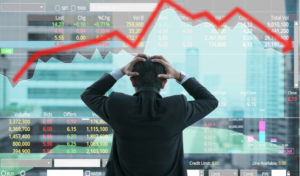
You know something in this market environment isn’t quite right when eight years into a bull market investors are still hanging on every word out of the world’s central banks. The WSJ reports on the upcoming tight-rope act of ECB President Mario Draghi. There used to be a time when the prices of stocks and bonds reflected company and business cycle fundamentals. Today, that seems like an idyllic movie set from a bygone era.
Mr. Draghi’s task on Thursday is even trickier than the balancing act that faced the Fed when it wound down its own QE program almost four years ago. The ECB has had to buy bonds more aggressively than the Fed to stimulate the eurozone economy, because economic activity is less sensitive to financial asset prices than in the U.S., economists say.
Purchases of U.S. government bonds never exceeded their net issuance, whereas for the ECB, QE is currently seven times bigger than net issuance of eurozone government debt, according to Torsten Slok, an economist with Deutsche Bank in New York.
The ECB’s balance sheet is also significantly larger as a share of gross domestic product—40% of eurozone GDP, versus 24% for the Fed. That means the ECB’s exit could create bigger ripples than the Fed’s, which triggered a “tantrum” in global bond markets four years ago.
The ECB faces an additional hurdle: It is running out of bonds to buy. Policy makers say they are prepared to use up all of the remaining stock of eligible bonds—some €300 billion—in a final effort to drive up stubbornly low inflation.
Read more here.



